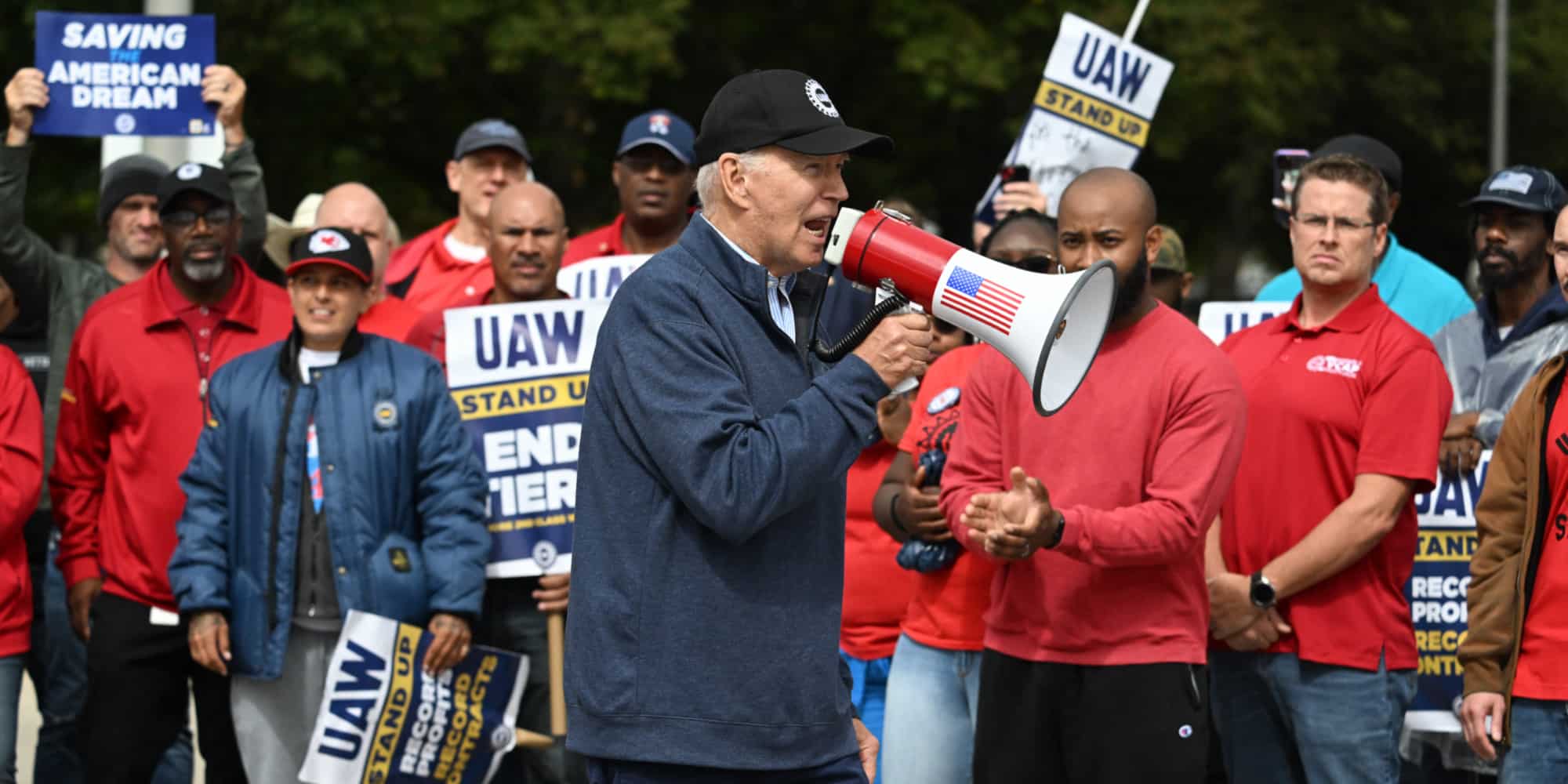Car manufacturers tremble as the strike in the United States intensifies

Nearly 25,000 employees are on strike while negotiations between unions and General Motors, Ford, and Stellantis are stalling.
For two weeks, United Auto Workers (UAW) has launched an unlimited strike at three factories, one for each group. The three affected plants are assembly plants in Wayne, Michigan for Ford, Wentzville, Missouri for General Motors, and Toledo, Ohio for Stellantis-Chrysler. These three sites employ nearly 13,000 unionized workers out of the 150,000 represented by the powerful union, and produce over 20,000 vehicles per week. Since this morning, two new sites have joined the movement, one owned by Ford in Chicago and the other, owned by GM, in Lansing, Michigan, bringing the total number of striking employees to 25,000.
Wages: the nerve of the war
The union demands, among other things, a 35% wage increase over four years, while the automakers limited themselves to a 20% increase in the last negotiations, which were inevitably unsuccessful. The union also calls for the end of the dual wage scale system. This provision was introduced in 2009 when General Motors and Chrysler were on the brink of bankruptcy. Thanks to it, employees with over 8 years of seniority are assured a minimum wage of $32 an hour. On the flip side, new employees now earn half that amount.
Ford’s CEO, Jim Farley, tried to defuse the social bomb by claiming that the automaker had made the UAW its “most generous” offer in the past 80 years. It includes wage increases, inflation protection measures, 17 days of paid leave, and increased pension contributions. However, there was no mention of the highly controversial demands for negotiations on a 32-hour workweek and/or a four-day workweek.
Toward a historic strike?
In the short term, automakers dismiss any risk of vehicle or parts shortages. The last major strike in 2019 only affected General Motors and lasted 40 days. Although the revenue loss for the group, its brands, and subcontractors exceeded one billion dollars, inventories were sufficient to buffer the activity of dealerships. However, the situation is different four years later because manufacturers have learned, sometimes with difficulty, to better manage their inventories to reduce storage costs.
Shawn Fain, the new president of the UAW, knows he is in a strong position one year before the presidential election. His best supporter could be President Joe Biden, whose economic record is criticized from all sides and who is blamed for his inability to curb inflation in the United States. Biden expressed support for the unions early this week, posing with a picket line, while assuring automakers of the state’s backing in case of a prolonged strike. By trying to please everyone, the state has only reinforced everyone’s positions and ignited the spark for a historic strike.
According to analysts, the initial effects of the strike should begin to be visible very soon. An opportunity for foreign automakers and… Tesla, which has always managed to keep the UAW at bay at its factories.
READ ALSO > USA: Tesla dominates the market with 60% share
This page is translated from the original post "Les constructeurs tremblent devant le durcissement de la grève aux États-Unis" in French.
We also suggestthese articles:
Also read




